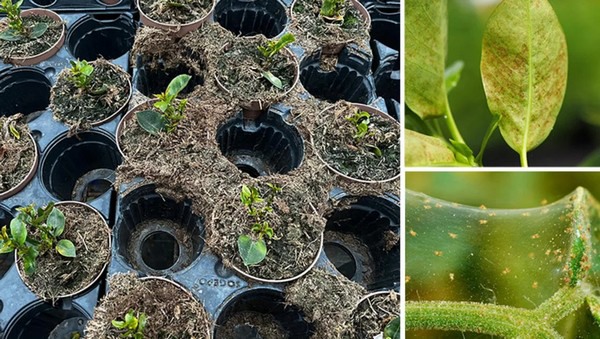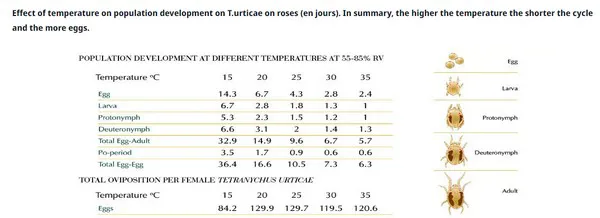Mites are tiny spiders smaller than 0.5 mm with biting mouthparts. They prefer warm and dry areas. They create direct feeding damage on Mandevilla and indirect damage by chlorosis, growth reduction of leaves and flower buds, and lack of flowering. By reading this article from the Ornamentals Advisory Blog, you can learn more about the different types of Spider mites and the influence of temperature on their growing cycle.

Mites are part of Arachnida, a major class of arthropods. They belong to the subclass Acari, hence the insecticides used to kill these pests are called acaricides. The Acari subclass consists of a wide range of Orders and groups of related mites – the main pest Order is the Prostigmata.
The most common mites species found in the greenhouse are :
- Red Spider Mite (or two spotted mites) Tetranychus urticae
- Carmine Spider Mite Tetranychus cinnabarinus
- Bulb Scale Mite Stenotarsonemus laticeps

Syngenta offers several products for mite control with different modes of action to minimize the development of insect resistance. Most acaricides provide some control of the Tetranychidae, whereas Tarsonemidae and Eriophyidae may require acaricides with translaminar movement to complete the control of mites concealed in buds and tightly folded leaves. Control can be achieved through applications of selected miticides. Rotating chemical classes and modes of action is important for mites because of their rapid lifecycle. Their ability to have multiple generations per year causes populations to develop miticide resistance.
Source: Ornamentals Advisory Blog
For more information:
Syngenta Group
www.syngenta.com
